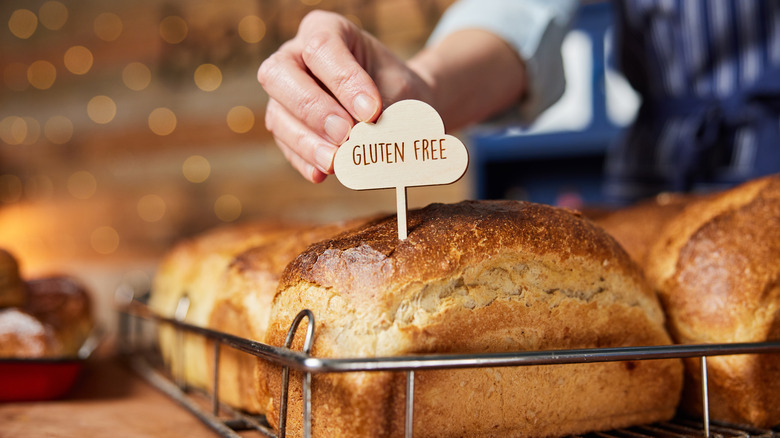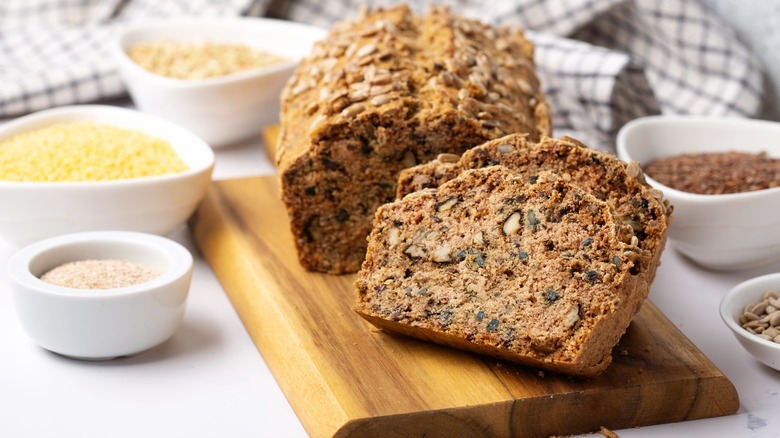Why Psyllium Husk Is So Crucial For Gluten-Free Bread
We may receive a commission on purchases made from links.
Gluten allergies and sensitivities are on the rise, with research positing that the once-rare intolerance is now thought to affect at least 10% of the population. Beyond that, even some people who aren't medically sensitive to the wheat protein avoid it for certain diets. Needless to say, bringing a loaf of homemade brioche to your friend's dinner party isn't the sure crowd-pleaser it once was — but if you're determined to master gluten-free bread, for yourself or for a friend, psyllium husk is the ingredient you've been missing.
One of the biggest issues with gluten-free bread that simply swaps wheat flour for gluten-free flour is that it often ends up rubbery and dense. Without the web of gluten strings that form when a liquid is mixed with traditional flour, the stretchy, fluffy bread we all know and love is difficult to achieve. But psyllium husk, the outer shell of Plantago ovata seeds, changes that: When the husk comes into contact with water, it "binds" the liquid, forming a gel that imparts the missing elasticity into your loaf. And just like that, you've got your dinner party contribution. One caveat: If you're making certain types of bread, this addition may be unnecessary. Although not entirely gluten-free, sourdough is a relatively low-gluten food, for instance.
Mastering the use of gluten-free ingredients
One of the reasons why gluten-free baking can be intimidating is because of the unfamiliar ingredients. While some gluten-free recipes include simple swaps, like changing out puff pastry for rice paper in croissants, others have a laundry list of hard-to-pronounce ingredients that you're not sure where to find and how to use — and psyllium husk is no exception. It comes both whole and powdered, and while both work, they need to be added in different proportions, so make sure to check your recipe. Powdered is slightly more common and can be found at most major retailers including Target, Whole Foods, and Safeway located in the vitamins and supplements section. You can even buy psyllium husk powder, like this 1½-pound bag from Anthony's, on Amazon. Make sure to mix it with water first to form a gel, then add it alongside your gluten-free flour of choice at the ratio specified by your recipe.
If you can't find psyllium husk, xanthan gum can be a good alternative for gluten-free baking. While psyllium is best for bread, xanthan gum works well for helping cakes, cookies, and brownies rise — and you can even use any extra to make homemade marshmallows.

